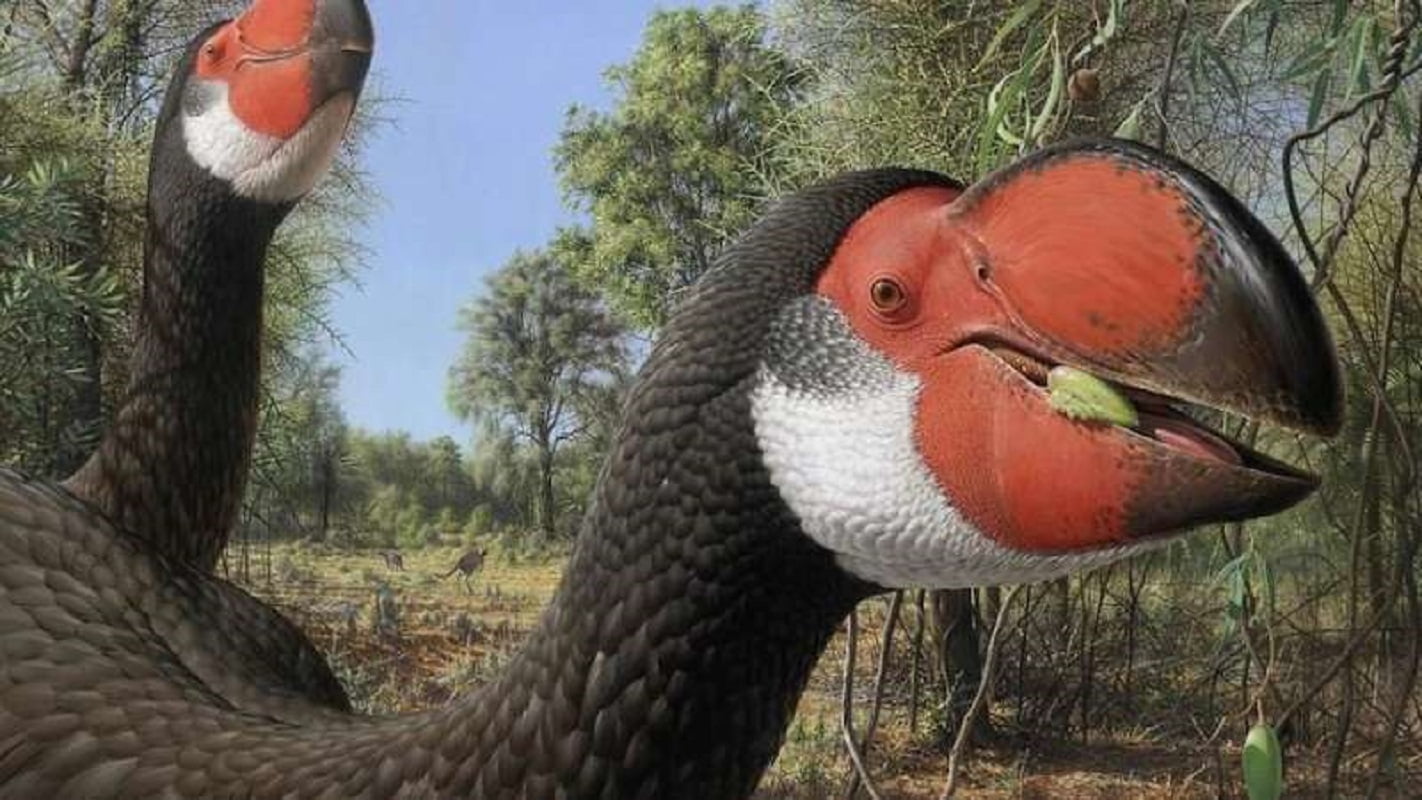Big bones of the extinct “thunderbird,” or dromornithid, have been found in the northern Flinders Ranges and near Alice Springs. These bones have given us new information about how slowly they bred.

Zoologists from the University of Cape Town (UCT) and Flinders University have looked at the tiny structures of the fossil bones of these giant Australian animals and found that their size and breeding cycle changed slowly over thousands of years. Still, they couldn’t keep up with the changes in their environment and died out.
Professor Anusuya Chinsamy-Turan from UCT, South Africa, says, “Unfortunately for these amazing animals, which were already facing more problems because of climate change as the interior of Australia got hotter and drier, their breeding biology and size couldn’t keep up with the faster breeding cycle of modern (smaller) emus to keep up with these more difficult environmental conditions.”
“Questions like how long it took for these considerable birds to reach adult size and sexual maturity are crucial to understanding their success as an evolutionary group and why they couldn’t live with humans in the end.
“We looked at thin slices of the fossilized bones of these thunder birds through a microscope to find the biological signals they held. The microscopic structure of their bones tells us how long it took them to grow to adult size when they became sexually mature and even when the females ovulated.
The study shows that Dromornis strong, which might have been the enormous bird to ever live on Earth, took a long time to reach full size and sexual maturity, possibly up to 15 years.
By the time Genyornis newtoni lived in the late Pleistocene, the climate was much drier, with more changes in seasons and droughts that didn’t happen at the same time every year. With a body weight of about 240 kg, these birds were six times bigger than emus. However, they reached adult size faster than the first mihirung, likely in 1–2 years, and started breeding soon after.
But it took them a few more years to reach adult size, so their growth was still slow compared to most modern birds, which get an adult size in a year and can start breeding in their second year.
Trevor Worthy, an associate professor of paleontology at Flinders University and a paper’s co-author, says that dromornithids and emus lived together for a very long time before the last mihirung died out.
“They stayed together through several big changes in the environment and climate,” he says. “However, even though Genyornis was better adapted than its ancestors and lived through two million years of the Pleistocene when dry and drought conditions were the norm, it was still a slow-growing and slow-breeding bird compared to the emu.
“Because emus and dromornithids had different ways of raising their young, the emu had a significant advantage when their paths crossed with humans about 50,000 years ago. The last dromornithid went extinct about 40,000 years ago.
“In the end, the mihirungs lost the race for evolution, and a whole group of birds disappeared from Australia and the rest of the world.”
Even though the bones of late Pleistocene dromornithids show that their reproductive biology changed in response to the ever-changing climate and that they started having babies earlier than their ancestors did, this didn’t make them as good at reproducing as large ratite birds are today.
For example, emus reach their full adult size and start having babies in one to two years. This way of breeding makes it possible for their populations to grow again after droughts or food shortages that could have caused their numbers to go down.
